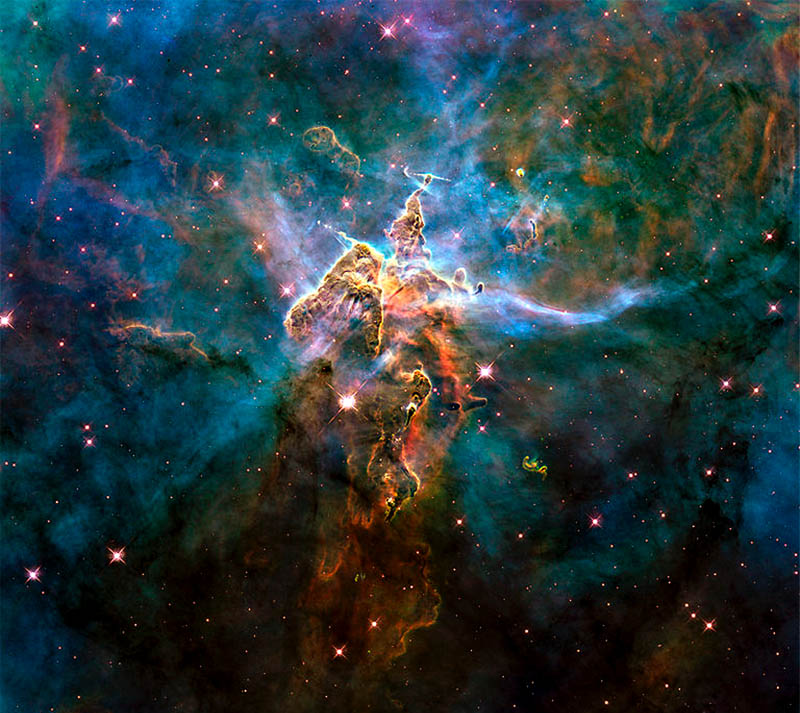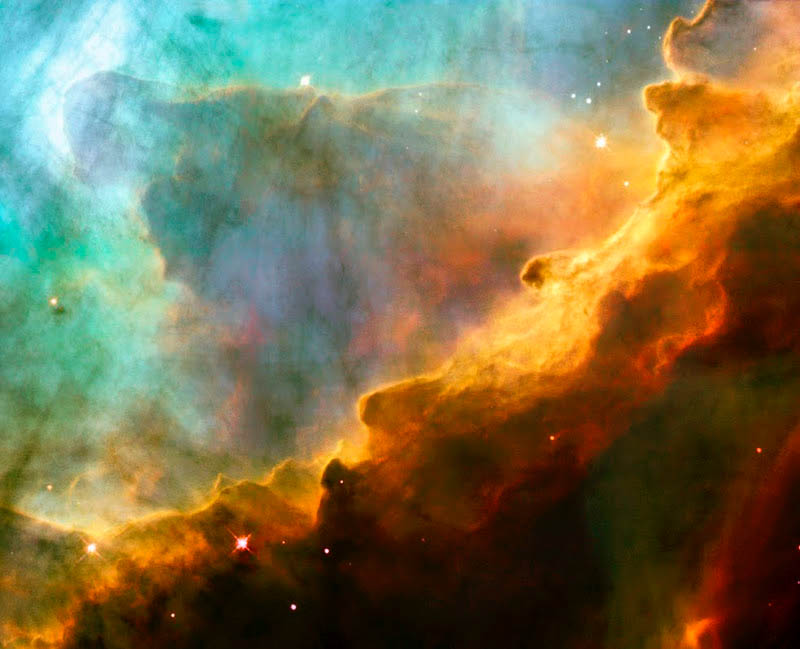 "QUANTUM SHOT" #747 "QUANTUM SHOT" #747Link - article by Avi Abrams Blast Off! These glorious stars and galaxies are all the more spectacular if you consider how far their light had to travel to reach us: millions, sometimes billions of years... Carl Sagan once said: "We find that we live on an insignificant planet of a humdrum star lost in a galaxy tucked away in some forgotten corner of a universe in which there are far more galaxies than people." True enough, and yet, as we consider our significance in the cosmic order of events, we can only "keep up the good work, if only for a while, if only for the twinkling of a tiny galaxy." (Wislawa Szymborska)  (Carina Nebula - image: NASA, via) The sharpest view of the Orion Nebula that the Hubble telescope has ever provided, will make you pause in wonder, or even take a deep breath:  (image via) Carina Nebula's region around the unusually hot massive young star WR 22, a member of the rare class of Wolf–Rayet stars:  (image via) Another "small" but incredibly complex part of the spectacular Carina Nebula:  (image via) Stellar gas makes incredible color display: clouds of glowing hydrogen inside the active star forming region IC 1396 -  (image via) An interesting part of Carina Nebula looks like a wise old sage with a pointing finger... and the other part, namely Keyhole Nebula, shows a "hand with a finger" (sometimes called the "Finger of God"):   (image via) Even more complex shapes can be found within Carina nebula, forming a sort of a cosmic "landscape" amid multitude of stars:  This apocalyptic image is the Hubble telescope's photo of the super massive star Eta Carinae. The spectacular expanding globular gas outburst around it is called the Homunculus (little man in Latin):  (image via) The beautiful medusa-like remnant of a supernova E0102:  (Image credit: X-ray: NASA/CXC/MIT/D.Dewey et al. and NASA/CXC/SAO/ J.DePasquale; Optical: NASA/STScI) When galaxies "hubble", er... huddle together, they sometimes produce curious formations, like this Stephan's Quintet - more info. These five galaxies are in a violent collision, "and are involved in a cosmic dance that most likely will end with the galaxies merging." -  (images via) This cataclysmic "dance" or collision of galaxies also sends the shockwave bigger than our Milky Way across cosmos!  (image via) Another awesome concentration of galaxies is the Hickson 44 (about 60 million light-years away toward the constellation of Leo):  (image via) Glorious "cosmic halo" galaxy, or rather Sombrero Galaxy... its brim is the inimitable dark dust lane around the central large bulge (probably concealing the supermassive black hole):  (image via) Soap Bubble Nebula! This is one huge bubble... as large as our Solar System - more info:  Here is a classic image of a spectacular NGC 6217 spiral galaxy:  Some sort of a "cosmic ghost flying away" from a stellar coast of iridescent gas (the Omega Nebula):  (image via) And we are going to finish today with a truly colossal and cataclysmic image: two super massive black holes spiraling toward collision!:  (artist's vision of galaxies in collision, image via) CONTINUE TO "HELLISH WEATHER ON OTHER PLANETS"! -> ALSO CHECK OUT OUR "SPACE CATEGORY" ->
|
The Most Incredible Space Imagery
The Most Incredible Space Imagery:

Etiquetas:
Curiosities,
DRB,
fun,
strange


